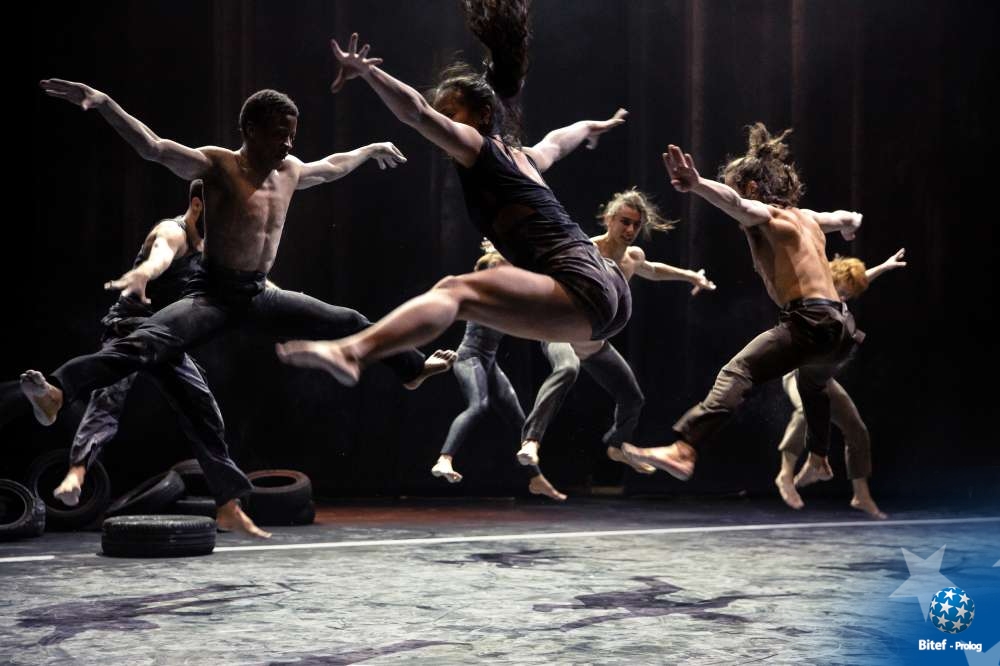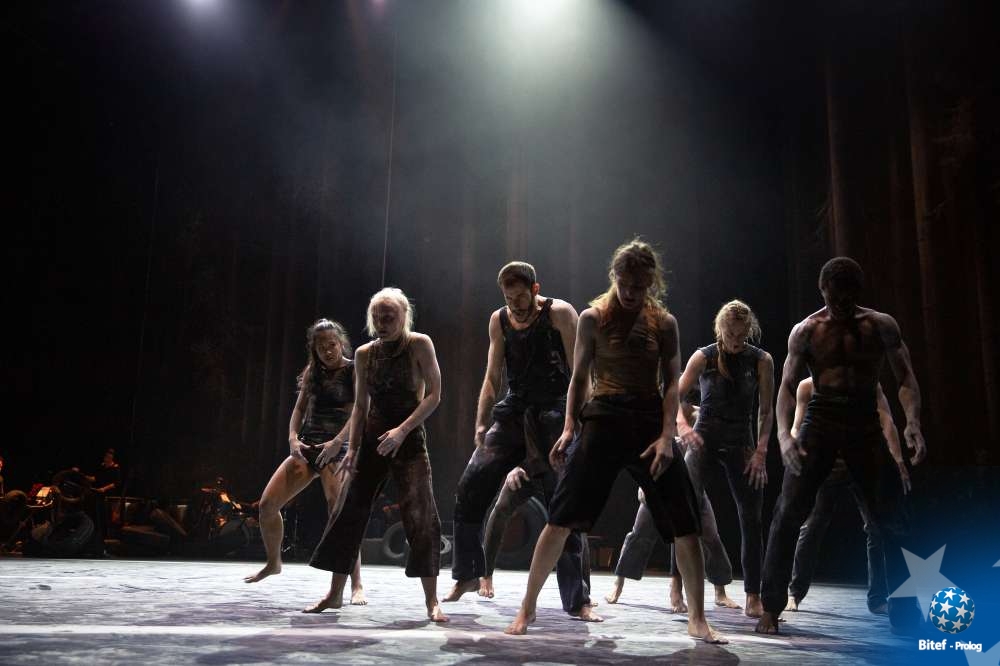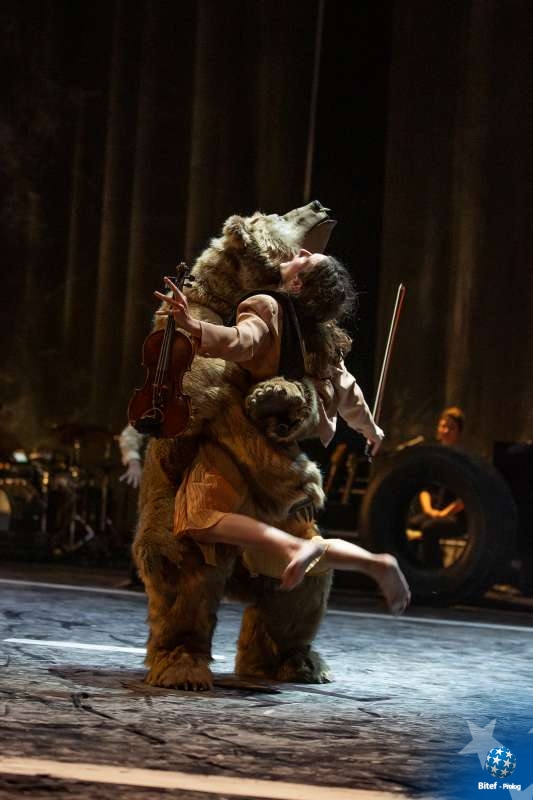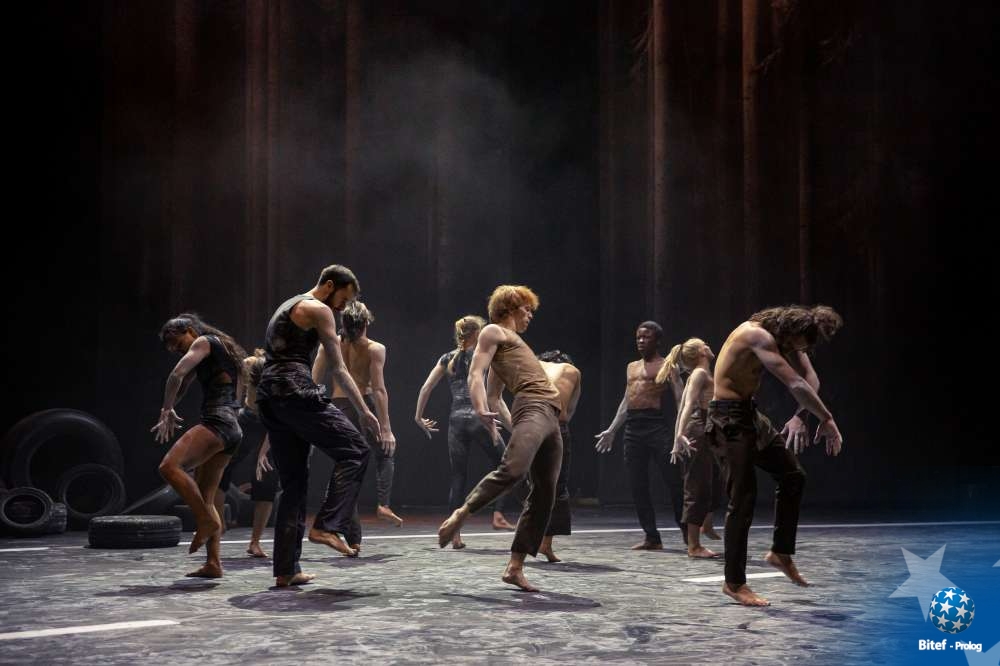About the Production
In Traces Wim Vandekeybus follows the traces he has left. He looks back on the intuitions from whence his search began: to the drama of impulses and instincts; to the game of energies and intensities. In the overwhelming Romanian nature, with Europe's last primeval forests, Vandekeybus searches for traces that are older than man and his memory. For ‘the inner story’, for the story that unfolds before or beyond language and can only be told in the pulses of dance and music.
It is a search for traces of nature that the body has forgotten or repressed. How much nature still lives in human mankind? How much animal in the human body? What happens when at risk or in danger, when we have to take intuitive decisions to survive?
The Author
WIM VANDEKEYBUS (1963) is a choreographer, dancer, filmmaker and photographer. He founded his dance company Ultima Vez in the mid-eighties. He made a remarkable artistic debut with his first performance What the body does not remember (1986). The performance won a Bessie, an award granted for groundbreaking work.
Vandekeybus has created a language of movement wherein he juxtaposes intuition, impulse and instinct with energy, risk and danger, which exemplifies a dramatic Weltanschauung, full of dynamics and conflict, through the medium of dance. His work is characterised by almost obsessive reiterations of one single concern: how man responds to extreme situations. In this context, he attaches special importance to what he refers to as ‘the moment of catastrophe’ - which ironically does not preclude his inclusion of humour, playfulness and even a certain jocular lightheartedness in his work.
Vandekeybus’s performances take the form of associative montages with a penchant for crisscrossing borderlines between disciplines that at the same time lose nothing of their deeply rooted autonomy in the process. His dance is rendered in a powerfully theatrical manner. (Live) music and video/film are not only integral to his mode of theatrical expression, but more often than not, are actually the prime movers underlying the performances. Vandekeybus has in the past collaborated with musicians such as Thierry De Mey, Peter Vermeersch, David Byrne, David Eugene Edwards, Arno, Charo Calvo, Mauro, Marc Ribot and Trixie Whitley. The choreographer has also created short films for use in various performances - some of which may be regarded as standalone works in their own right, such as Blush (2004) and Monkey Sandwich (2013). Vandekeybus also made Galloping Mind (2015), his very first feature film.
His performances represent a transition from tensions between bodies at a purely physical level, to more complex tensions as between groups, and as between groups and individuals. He represented existing tragedies by Jan Decorte and Euripides, and also collaborated with contemporary authors such as Bart Meuleman, Peter Verhelst and Pieter de Buysser. His recent work such as Mockumentary of a Contemporary Saviour and TrapTown, reveal his overarching disquiet about the current political state of global affairs.
Each of Vandekeybus’s performances are markers in his quest for new forms. However, in essence, his performances are and remain rooted the vital energy of the body itself. This is a realm in which Vandekeybus has been able to create a rich and diverse oeuvre that is acclaimed not only at home, but internationally as well.
From the Reviews
“Traces is much more than a simple choreography: it is an investigation into human nature told through snappy bodies and spectacular stage effects.”
Marievittora Veneruso, teatro.it
“As if Vandekeybus has become ill from all the harm that we cause to nature, and therefore also ourselves. As now everything has been humanised in the Anthropocene, this new human ‘nature’ seems much crueler and harsher than the real thing.”
Pieter T’Jonck, pzazz.theater
“The performers re-enact these primal scenes with a mixture of physical theatre and contemporary dance. The language Vandekeybus creates is visceral, demanding and sometimes chaotic. Dancers are sent careering around the stage, hurling one another and leaping between partners, yet Vandekeybus's approach leaves the space filled but not overstimulated.”
Louise Lewis, British Theatre Guide



